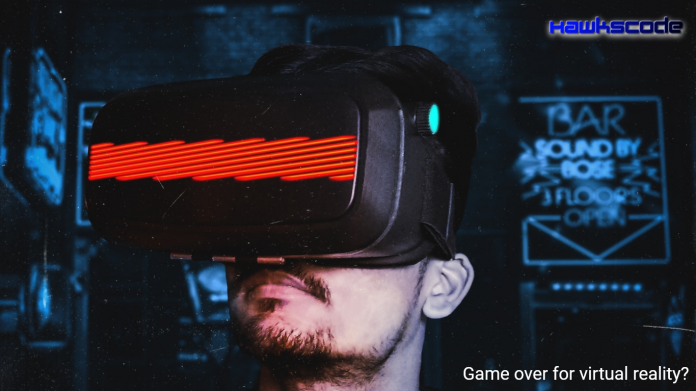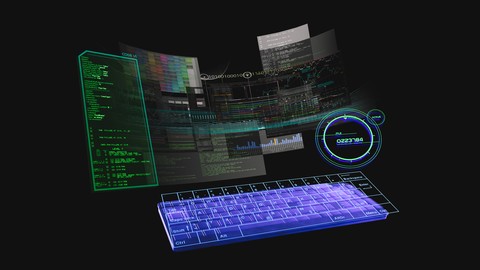Game over for virtual reality?
Game over for virtual reality? LIKE the rest of the consumer-electronics industry, video-game makers would be lost without the traditional binge buying that happens between mid-November and the late December. This year’s gift-giving season will be as much a treat for makers of video-gaming gadgets as for their happy recipients. Prices of the headsets, sensors and controllers that let game-players explore the artificial world of virtual reality (VR) have been slashed to levels most families can now afford. Stockings could be bulging with VR headsets from Samsung, Dell, Sony, HTC, Oculus (a division of Facebook) and others. For those willing to wait until early 2018, costs could fall still further—as a new, even cheaper generation of VR headsets hits the market.

Important Announcement – EasyShiksha has now started Online Internship Program “Ab India Sikhega Ghar Se”

Despite the merry ho, ho, ho, however, there is a distinct whiff of urgency in the air. Virtual reality has failed to live up to its hype, and mainstream consumers never really bought into the technology. Even ardent gaming fans have been slow to embrace VR. No-one can blame them. The content has been underwhelming, and the gear needed to do the job properly has been too cumbersome and expensive. Apart from a head-mounted display, with its high-resolution OLED (organic light-emitting diode) screen, other necessary bits include a pair of handheld controllers (for signalling the user’s intentions) along with a couple of wall-mounted sensors (for tracking the user’s movement).
That is just a start. The latest version of Microsoft’s Windows 10 software (Fall Creator’s Update) includes tools that let headset makers use the company’s “mixed reality” platform. Microsoft has teamed up with device-makers such as Acer, Asus, Dell, HP, Lenovo and Samsung to produce headsets based on its software. By not having to develop the operating software themselves, or license it from elsewhere, Microsoft’s partners are able to sell VR headsets for $300 to $400.
Top Software Engineering Courses
Not to be outdone, Oculus VR recently unveiled a standalone headset called the Oculus Go, which is expected to sell for $200 when launched next year. Facebook’s boss, Mark Zuckerberg, believes (optimistically) that virtual reality could garner a billion users over the next year or so. Meanwhile, HTC has announced a similar standalone VR headset, called Vive Focus, for the Chinese market. As yet, no mention has been made as to whether it will be sold elsewhere.
Entry-level offerings like the Oculus Go and Vive Focus are not to be confused with bargain-basement headsets such as Samsung’s Galaxy Gear VR or Google’s Cardboard and Daydream—which require a smartphone to be inserted in an otherwise empty strap-on box, to serve as screen and processor. These do-it-yourself kits can be had for anything from $15 for a cardboard cutout to $90 or so for a more substantial model. Be warned, though: their limited resolution and freedom of movement provide little more than a taste of what VR has to offer. Game over for virtual reality
Headsets like the Oculus Go and Vive Focus rely on technologies developed originally for smartphones. These include system-on-a-chip processors, and also miniature gyroscopes and motion sensors. Unlike the do-it-yourself models, the components in these new standalone VR models are fully integrated into the headset. Even so, compromises have had to be made to keep them light enough for people to wear on their heads. And, while Qualcomm’s Snapdragon series of smartphone processors are impressive, they are no match, when it comes to producing fluid graphics with realistic lighting and shadows within the VR space, for the Intel or AMD powerhouses used in gaming computers .
Other cost-cutting measures hobble performance further. The forthcoming Oculus Go, for instance, relies on an inexpensive LCD panel instead of a pricier OLED display.
The latter updates the image much faster, reducing the blur caused by the user’s movements. To cut costs still more, the Oculus Go will be shipped without the external sensors needed to track the user’s movements within the room—though the standalone device can at least track head movements, thanks to its internal accelerometers. It also comes with a fairly simple controller, rather than a pair of the powerful handheld “Touch” devices found in the Oculus Rift package. Game over for virtual reality.
Empower your team. Lead the industry
Get a subscription to a library of online courses and digital learning tools for your organization with EasyShiksha
Request NowFor the time being, people wanting to experience virtual reality at its most immersive will have to cough up and continue to stumble over a cumbersome cable that ties them to a PC powerful enough to do all the visual computation, while minimising the effects of “latency”—ie, the lag between the user doing something and seeing the action occur in the virtual scene. Untethered headsets that offer a richly immersive experience are still a way off. Over the past year, Oculus has provided glimpses of its project Santa Cruz, a mobile VR headset that needs neither external sensors nor a tethered PC. All the company will say about when it might appear is that early units will be shipped to game developers sometime next year.
I hope you like this blog, Game over for virtual reality? To learn more visit HawksCode and Easyshiksha.
ALSO READ: the-psychological-impact-of-covid-19-on-the-human-mind
Get Course: International-Finance-for-Beginners








































































